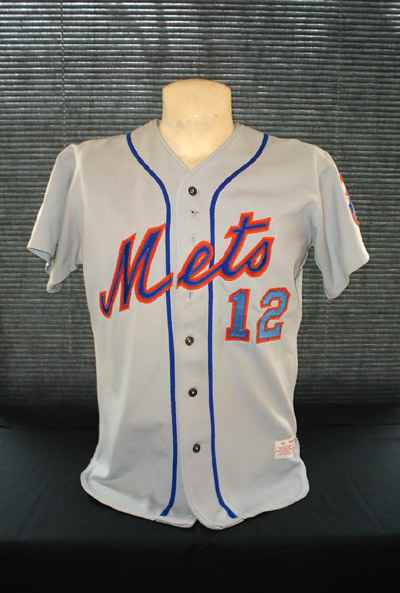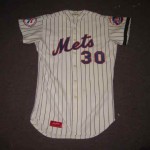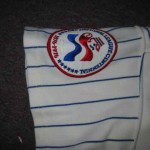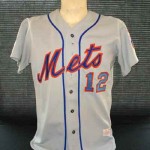Mets Yearbook 1976 struck a chord with many of us…an 86 win team with Seaver, Koosman and a young Matlack, and a guy hitting 37 homers in RF back when 37 was a big big number. Â What could go wrong?
Tom shares his memories:
Shannon,
A few personal memories of the 1977-early 80’s Mets;
I was 16 in 1977 and continued to go to at least 20-25 games a year, long before “Plans†or ‘Packs’ existed. You just went to the park with your own “plan†in March and got seats to the games you wanted. Of course, with the team last or second to last in the East for years, you could get a good seat on a whim on any particular day during the season, but I always bought a bunch of seats early (much cheaper, obviously) so that I had certain games set before the season came, including a number of doubleheaders. I also always went to Old Timers Day and Fan Appreciation Day (in the ’76 Yearbook show, they noted that day, showing the pretty good winter Mets caps that they gave out for a few season in a row back then on FA Day).
My friends and I really didn’t mind that the team wasn’t all that good, though of course, that would have been preferred. But here’s the thing: In the late 70’s, with a poor team, you knew that the only people in the park were actual Met fans. From the mid-90’s on, that has never been the case. There may have been only 5,000 to 10’000 a night during the week (giveaways, as always, helped on weekends), but I don’t recall booing at all, even though we lost 90+ games every year. We understood that even the worst teams had at least a few good players. I enjoyed watching the development of Lee Mazzilli and John Stearns (who in the ’76 Yearbook show are seen wearing numbers 12 and 16, respectively. They switched numbers sometime around when they became regulars, Mazz to 16 and Stearns to 12). Steve Henderson, from the Seaver trade, was a decent player, but how could he live up to being the one put up as the “big man†coming here in a trade fort our Franchise player? A few other guys I really want to mention are Lenny Randle, who had a great year in 1977 (.304, 33 SB) and was always at full throttle and the flamboyant – really comical – Willie Montanez, who knocked in 97 runs while playing first for us in 1978, after coming over in a wild, 4-team trade that sent two other favorites, John Milner (to the Pirates) and Jon Matlack (to the Rangers) away from Flushing. (Look that trade up, it also included two Hall of Fame caliber players, Bert Blyleven and Al Oliver.)   Craig Swan also led the N.L. in E.R.A. in 1978, though he only went 9-6 (13 no decisions).
Joe Torre was a good manager, even back then. He made the most of what little he was given. Anyone who didn’t see that, didn’t know their baseball. When the Yankees signed him and the moronic headline ran that said “Clueless Joe,†I recall telling a friend, “These newspaper idiots are the clueless ones. This is not good, the Yankees may win now.† And we all know what happened there.
Anyway, our team was bad in the late 70’s, but we loved going to the park, because it was baseball and you could see something you had never seen before, on a regular basis (not true in any other sport). You still won over 60 times, which if you count each win as a good day, is more days of joy than any other sport has in the regular season each year (Only the very best hockey or basketball teams win over 50 even, think about it).
One other thing, to all of those who so ridiculously knock this ownership and GM, you either weren’t around for M. Donald Grant or you were in a coma when he ruined our team. The Wilpons and Minaya aren’t even close to being as bad as Grant, who ran the team for Mrs.Payson’s daughter, after that wonderful lady passed away. They do care, even if they make mistakes. Grant was one of the last of the old school plantation guys, who thought they were more important than the players. And he and his buddy, another bitter old fool, Dick Young, were the reason Seaver was sent away. Nothing the Wilpons could ever do could be as bad as that, the absolute low point of the team’s history. And anyone who gives any credibility to the rash of Dick Young Youth media types is equally in a deep fog.
Tom
P.S. By the way, in the ’76 Yearbook show, I was amused that there was absolutely no mention of Mickey Lolich, the once great Tiger lefty who was at the end of his run when Grant sent the ever popular and still productive Rusty Staub to Detroit for him in ‘76. Lolich went 8-13, I believe. I really liked Lolich, but he was done. I happened to go to his best game as a Met though, a 2-0, 3-hit shutout against the Cardinals. A double by Torre and two-run homer by Kingman in the first accounted for all the runs. I recall it clearly, because I had great seats, in the second level of the then yellow Field Boxes (behind the aisle, not in front of it, with a view right down the leftfield line. I had bought them in March.
Related Posts:
Shannon watches Mets Yearbook 1976









